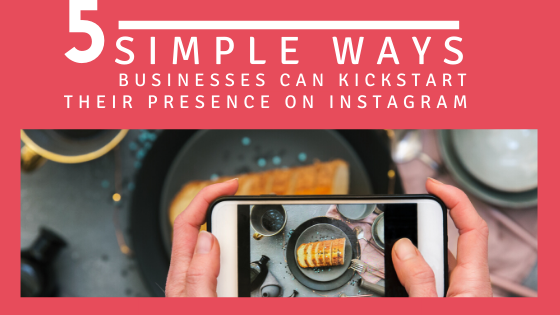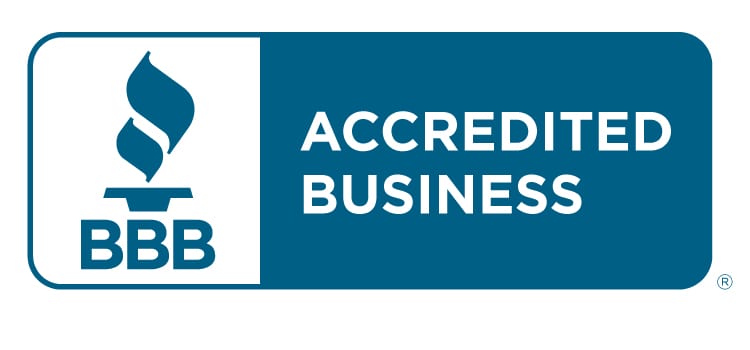
5 Ways Businesses Can Kickstart Their Instagram Presence
Let’s face it, Instagram marketing is undeniably an integral part of promoting your business these days. All the top brands out there are on this platform so if you’re a business owner, there’s no reason why you shouldn’t be on it.
In 2018, Instagram was able to hit 1 billion monthly active users wordwide and it will only keep on growing as years go by. This platform is all about visual presentation so it’s the perfect place to showcase your products and services in a way that will capture your target market’s attention.
The result? SALES of course. Statistics show that 72% of Instagram users have purchased products that they’ve seen on Instagram. However, having an Instagram account doesn’t automatically translate to sales. You need to have the right strategic plan to properly execute your social media campaigns so here are 5 key principles that you need to take note of.
1. Content Is King
As cliche as it may sound, this principle will always be relevant because customers slowly develop loyalty to a brand through the content that they consume from you. There are different categories of content that you can provide for your audience but the three basic categories are educational, entertainment, and inspirational content.
Educational content are those that provide valuable information for people that they can use in their daily lives. Some examples of these are “how-to” and “do-it-yourself” videos that you will see on IGTV.

For entertainment content, the best examples would be memes, funny videos or any content that puts a smile on your audience’s faces. On the other hand, inspirational content are those that motivate your audience to do something and the perfect example would be podcasts or those short clips coming from inspirational speakers such as Gary Vaynerchuk.

The kind of content category you use will always depend on your niche. Just make sure that you are consistent when creating your content by using color schemes, filters, and feed patterns so your audience can easily remember your brand.
2. Create A Posting Plan
Once you’ve figured out the kind of content that you will craft, it’s now time to create a content calendar. What this means is that you need to determine when to post your content on specific days and times of the week. You can do this by using Instagram insights to know when your followers are online.
It ‘s also important that you are consistent with your schedule. A good example would be Taco Bell UK posting its #TacoTuesday campaign on Instagram every Tuesday. The human mind is wired to recognize patterns and it’s best if you take advantage of that. Come up with at least one weekly content that’s relevant to your business.
3.Make Use of Geotags and Hashtags
You don’t have to be a social media expert to know what hashtags are but if you are a total newbie, then let’s break it down for you.
A hashtag can be any word the has a “#” before it. For example, if you go on Instagram and type the hashtag #food on the search bar, this is what you will see:

What the platform does is that it categorizes all content with that same hashtag and ranks it according to popularity (top posts) and chronology (recent posts). The proper way of using hashtags is by using relevant tags on your posts to make them more visible. It wouldn’t make sense putting #shoes on a photo that’s all about food, would it?
Another way of maximizing the use of hashtags is to create branded tags that are unique to your business. A perfect example would be Nike’s #JustDoIt campaign. Obviously, that is there slogan but they utilized it well and turned it into a branded hashtag so when you type it on the search bar, most of the posts you would see are related to Nike.
Meanwhile, geotags are basically locations that are added to your posts. It will look like this:

You might be asking what this does to your business. Well, just like hashtags, it makes your business more visible. A lot of consumers these days are turning to Instagram as well to search for stores in their local areas.
For example, if someone wants to find restaurants in this local city of Murray Bridge, South Australia, all they need to do is go to “places” and type this:

This would then give you a list of all the restaurants and their addresses in the locality. You can tap each one them and have a look at their photos or photos from other people who have visited them.
There have been lots of success stories that were a result of geotagging so don’t miss out on it.
4.Dive Into Instagram Stories
There are more than 400 million active users on Instagram that are posting stories on their accounts. If you think that stories are only for personal accounts, then that’s where you’re wrong.
Statistics show that one-third of the most viewed stories on Instagram are coming from business accounts. What stories do to your business is that it makes your brand more authentic. For example, a restaurant can take behind-the-scenes footage of what they do in the kitchen or what they did during their team building event.
Giving your consumers an inside look to what you do is a good way to create brand loyalty.
5.Videos Are Important Too
We all know that Instagram started out as a photo-sharing app but videos have been taking over the world of content marketing lately. Not to mention, videos are comment magnets so they can definitely boost post engagement.
Instagram limits videos up to 1 minute only so make sure that you craft your videos well that you’re able to deliver your message across your audience properly.
However, if there is a need for longer videos, you can always post on IGTV. Whenever you post on IGTV, you will also have the option of posting a preview on your feed. You can basically give your consumers a teaser of the video content that you have in store for them.
If your business is not on Instagram, you’re definitely way behind your competitors now, unless they’re not on Instagram too. Kickstart your business by building that page and applying these five core principles


